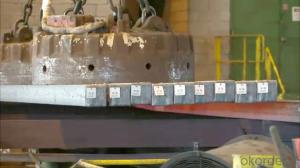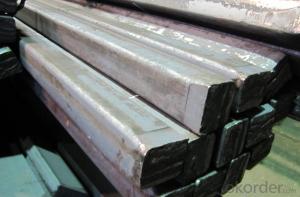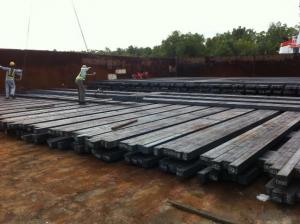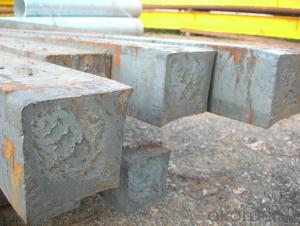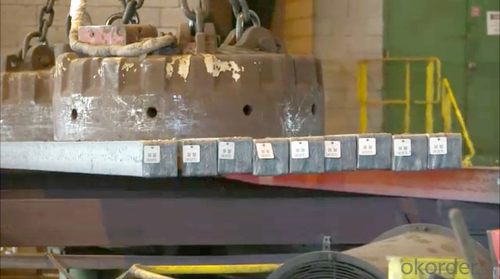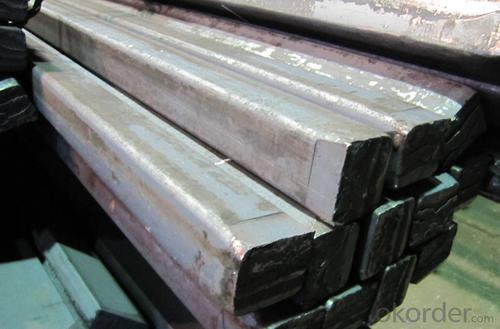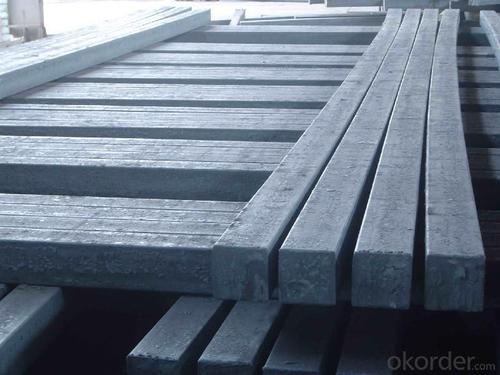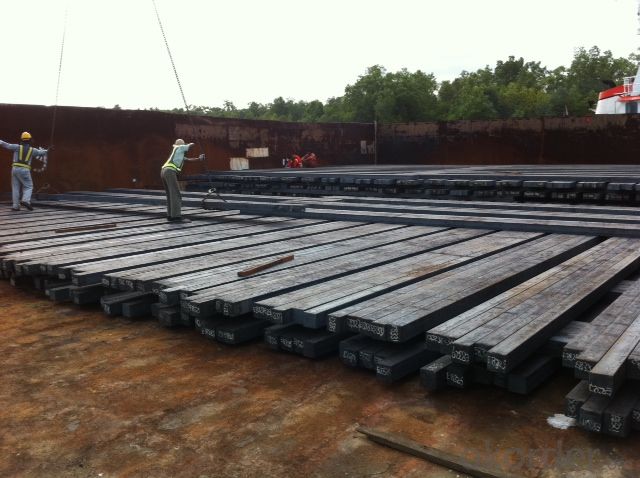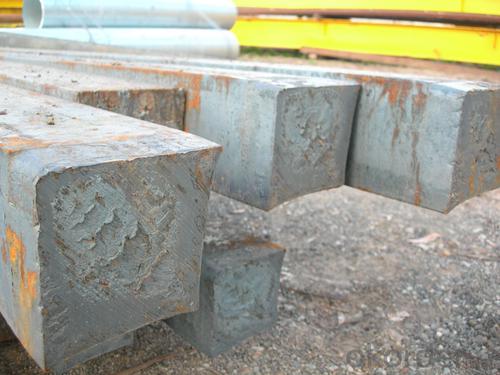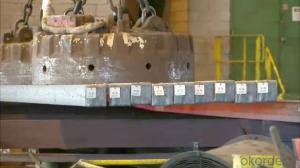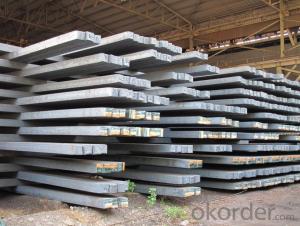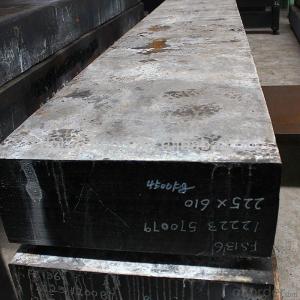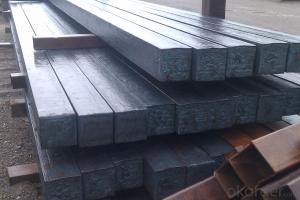Prime square alloy steel billet 145mm Q235
- Loading Port:
- Shanghai
- Payment Terms:
- TT OR LC
- Min Order Qty:
- 100 m.t.
- Supply Capability:
- 10000 m.t./month
OKorder Service Pledge
OKorder Financial Service
You Might Also Like
Structure of Prime square alloy steel billet 145mm Q235
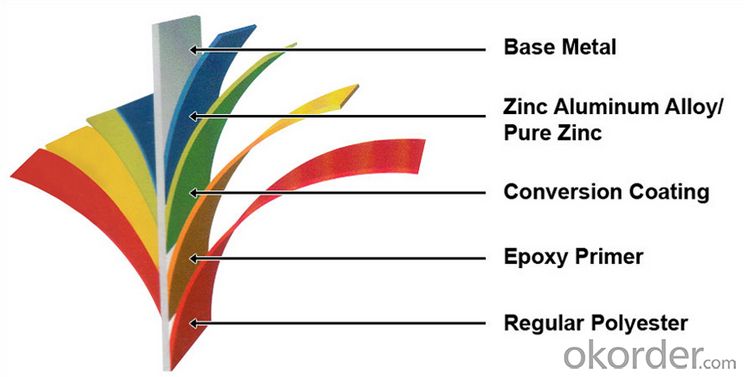
Description of Prime square alloy steel billet 145mm Q235
1) Excellent corrosion resistance: The zinc layer provides a good protection of Pre-painted Galvanizeed Steel Sheet.
2) High heat resistance: The reflective surface of the material aids in efficiently reflecting the sunlight away and in turn reducing the amount of heat transmitted. The thermal reflectivity converts into energy savings.
3) Aesthetics: Pre-Painted Galvanized steel sheet is available in plethora of patterns and multiple sizes as per the requirements that given by our customers.
4) Versatility: can be used in the various areas.

Main Feature of Prime square alloy steel billet 145mm Q235
Manufacture Progress:HRC-CRC-GALVANIZED-COLOR COATED
Application : Construction, electrical, transportation, steel plant, composite board plant, steel tile factory
Payment & Shipping Terms:T/T ,L/C, and FOB CHINA
Minimum Order Quantity: 25Tons
Packge Type: Moisture-proof paper inner,Steel outside,Bundle by steel rope.
Package in Container : Wood as a foot pad, wire rope reinforcement,PPGI steel coil tied together by steel rope.
Applications of Prime square alloy steel billet 145mm Q235
1) Excellent corrosion resistance: The zinc layer provides a good protection of Pre-painted Galvanizeed Steel Sheet.
2) High heat resistance: The reflective surface of the material aids in efficiently reflecting the sunlight away and in turn reducing the amount of heat transmitted. The thermal reflectivity converts into energy savings.
3) Aesthetics: Pre-Painted Galvanized steel sheet is available in plethora of patterns and multiple sizes as per the requirements that given by our customers.
4) Versatility: can be used in the various areas.

Specifications of Prime square alloy steel billet 145mm Q235
Product | Billet |
Material Grade | SGCC / SGCH / DX51D+AZ, etc |
Thickness | 0.6-3.0mm |
Width | 500-1500mm |
Tolerance | Thickness: +/-0.02mm , Width:+/-2mm |
Zinc-coating | Z30-150g/m2 |
Technique | Raw material: Hot rolled steel coil --> Cold rolled_>hot dipped galvalume |
Surface | Dried, Chromated, Unoiled |
Spangle | Regular spangle , small spangle, zero spangle |
ID | 508MM 610MM |
Coil weight | 1-25MT |
Export package | Cardboard inner sleeves, Waterproof paper, galvanized steel covered and steel strip packed |
FAQ of Prime square alloy steel billet 145mm Q235
We have organized several common questions for our clients,may help you sincerely:
1. How Can I Visit There?
Our company is located in Tianjin City, China, near Beijing. You can fly to Tianjin Airport Directly. All our clients, from home or aboard, are warmly welcome to visit us!
2. How Can I Get Some Sample?
We are honored to offer you sample.
3. Why choose CNBM?
we always fix steel produce in container well to make it safe arrive at destination port
we always provide best and professional forward service for our buyer
we always apply 14days free detention for our buyers container in destination
we provide one set After-sales service for our buyer
we provide China inland steel market price report
we help our buyer become number one in local market .
- Q: Are there any international standards for steel billets?
- Yes, there are international standards for steel billets. The International Organization for Standardization (ISO) has developed several standards that define the requirements and specifications for steel billets. The most commonly used ISO standard for steel billets is ISO 683-2, which specifies the technical delivery requirements for hot-rolled steel bars, sections, and billets for general engineering purposes. Additionally, the American Society for Testing and Materials (ASTM) has also developed standards for steel billets, such as ASTM A615/A615M, which specifies the requirements for deformed and plain carbon-steel bars for concrete reinforcement. These international standards ensure that steel billets produced and traded globally meet the necessary quality and performance criteria, promoting consistency and compatibility in the industry.
- Q: How do steel billets contribute to the overall thermal insulation of a structure?
- Steel billets do not contribute to the overall thermal insulation of a structure. In fact, steel is a good conductor of heat and can transfer heat quickly, making it a poor choice for thermal insulation.
- Q: How do steel billets contribute to the manufacturing of textile machinery?
- Due to their mechanical properties and versatility, steel billets are crucial in the manufacturing of textile machinery. Essentially semi-finished steel products, they come in rectangular or square shapes and serve as raw material in various industries, including textile machinery manufacturing. The manufacturing of textile machinery greatly benefits from steel billets, particularly in the production of structural components. These components, such as frames and supports, require durability and sturdiness for stability and efficient functioning. Steel billets, with their high strength and rigidity, are an ideal choice for these components. They can be easily shaped, machined, or welded to create intricate and complex structures capable of withstanding the heavy loads and vibrations associated with textile machinery. Steel billets also find application in the production of moving parts like shafts and gears. These parts must possess excellent wear resistance, high tensile strength, and good machinability to ensure smooth operation and a long service life. Through processes such as forging, rolling, or machining, steel billets can be transformed into these crucial parts, providing the necessary mechanical properties and precision required in textile machinery. Furthermore, steel billets are extensively used in the manufacturing of tooling and molds for textile machinery production. These tools and molds are essential for shaping and forming various components. By subjecting steel billets to heat treatment and precise machining processes, they can be transformed into high-quality tooling and molds that offer exceptional dimensional accuracy and durability. This significantly contributes to the overall efficiency and quality of textile machinery production. In conclusion, steel billets play a pivotal role in textile machinery manufacturing by providing raw material for structural components, moving parts, and tooling. Their mechanical properties, versatility, and ease of fabrication make them indispensable in the industry. Steel billets ensure the durability, precision, and functionality of textile machinery, ultimately enhancing the overall performance and reliability of the equipment.
- Q: What is the price range of steel billets?
- The price of steel billets can fluctuate due to several factors, including steel quality, market demand, and global steel prices. Typically, the price range for steel billets spans from $300 to $600 per metric ton. Nevertheless, it is crucial to recognize that these prices are susceptible to changes and may vary over time. For the most precise and current pricing details, it is advisable to seek guidance from steel suppliers or industry professionals.
- Q: How are steel billets used in the manufacturing of storage tanks?
- Steel billets serve as the primary raw material in the manufacturing of storage tanks. These semi-finished metal forms act as the starting point for producing steel plates or sheets, which are later used to construct the tank walls and base. Once obtained, the steel billets undergo heating and are then passed through a series of rollers to gradually shape them into the desired form. This process, known as hot rolling, is essential for creating the necessary thickness and dimensions required for the storage tank. Following the hot rolling process, the steel billets undergo further processing to eliminate any surface impurities or imperfections using a technique called descaling. This step guarantees the quality and durability of the final tank structure. Next, the steel billets are cut into smaller pieces, referred to as plates or sheets, which are then shaped and welded together to form the tank shell. These plates are meticulously cut and shaped according to specific engineering drawings and designs, ensuring that the tank meets the required specifications for strength, capacity, and structural integrity. Apart from the tank shell, steel billets are also used in manufacturing the tank's base or floor. The billets are processed and formed into the required shape, which is then welded or bolted to the tank shell to create a solid foundation for the storage tank. In conclusion, steel billets play a crucial role in the manufacturing of storage tanks by providing the necessary raw material for building the tank structure. Through various processes, the billets are transformed into steel plates and sheets, which are then shaped into the tank shell and base, ensuring the tank's strength and durability.
- Q: How do steel billets contribute to the construction of bridges and infrastructure?
- The strength, versatility, and durability of steel billets make them crucial in the construction of bridges and infrastructure. These cylindrical bars of steel are created through a process known as casting, where molten steel is poured into molds and allowed to cool and solidify. A primary benefit of steel billets in bridge construction is their ability to bear heavy loads. Bridges face substantial weights from vehicles, pedestrians, and natural forces like wind and earthquakes. Steel billets, with their remarkable strength and structural integrity, provide the necessary support to withstand these loads and ensure the bridge's safety and stability. Additionally, steel billets offer flexibility in design and construction. Their malleability allows for easy shaping and forming into various structural components, such as beams, columns, and girders, which are vital in bridge construction. This flexibility empowers engineers to create innovative designs and optimize material usage, resulting in cost-effective and efficient bridge structures. Another significant advantage of steel billets is their resistance to corrosion. Bridges endure harsh environmental conditions, including moisture, saltwater, and pollution. Steel billets can be treated with protective coatings or alloyed with elements like chromium or nickel to enhance their corrosion resistance. This guarantees the bridge's longevity and durability, reducing maintenance costs and extending its lifespan. Moreover, steel billets contribute to the speed of bridge construction. As they are prefabricated in steel mills, they can be produced in large quantities and transported to the construction site, ready for assembly. This prefabrication process minimizes on-site construction time, reducing traffic disruption and shortening the overall project duration. In conclusion, steel billets are essential in the construction of bridges and infrastructure due to their high load-bearing capacity, flexibility in design and construction, resistance to corrosion, and ability to expedite construction. Their contribution ensures the safety, longevity, and efficiency of bridge structures, making them a vital component in the development of robust and reliable infrastructure systems.
- Q: 100Q235 steel can only be rolled from billets of Q235?Or a billet can be rolled into Q195~Q215 and other models of steel?Is there a detailed classification of billets? Do you have GB?
- Billet classification of GB, it is convenient to check
- Q: What is the process of heat treatment for steel billets?
- The process of heat treatment for steel billets involves subjecting the billets to controlled heating and cooling cycles to alter their mechanical properties. This process is essential in increasing the hardness, strength, and toughness of the steel billets, making them suitable for various industrial applications. The heat treatment process begins with the heating stage, where the steel billets are heated to a specific temperature range. This temperature is typically above the critical point of the steel, which allows for the transformation of its microstructure. The heating can be done using various methods, including electric furnaces, gas furnaces, or induction heating. Once the desired temperature is reached, the billets are held at that temperature for a specified amount of time to ensure the uniformity of the heat distribution throughout the billet. This stage is known as soaking or holding, and it allows for the homogenization of the microstructure. After the soaking stage, the billets are subjected to cooling, which is equally important as the heating stage. The cooling rate is carefully controlled to achieve the desired properties. The cooling can be done through various methods, such as air cooling, oil quenching, or water quenching. Each method provides different cooling rates and results in different material properties. During the cooling stage, the steel undergoes a phase transformation, which results in the formation of different microstructures. For example, rapid cooling through water quenching can lead to the formation of martensite, a hard and brittle microstructure, while slower cooling can result in the formation of pearlite, a softer and ductile microstructure. Once the cooling is complete, the steel billets are often subjected to additional processes such as tempering or annealing. Tempering involves reheating the steel to a specific temperature and holding it there for a certain period, followed by controlled cooling. This process reduces the brittleness of the steel and improves its toughness and ductility. Annealing is another heat treatment process that involves heating the steel to a specific temperature and then slowly cooling it. This process is used to relieve internal stresses, refine the grain structure, and enhance the machinability of the steel. Overall, the process of heat treatment for steel billets involves carefully controlled heating, soaking, cooling, and sometimes additional processes to achieve the desired mechanical properties. This process is crucial in enhancing the performance and durability of steel billets, making them suitable for various industrial applications such as construction, automotive, and machinery.
- Q: What are the different machining processes for steel billets?
- There are several machining processes that can be used for steel billets, depending on the desired outcome. Some common machining processes for steel billets include turning, milling, drilling, and grinding. Turning involves rotating the billet against a cutting tool to remove material and create a desired shape. Milling involves using a rotating cutter to remove material from the billet, typically in a perpendicular or angled direction. Drilling involves creating holes in the billet using a drill bit. Grinding involves using an abrasive wheel to remove material and create a smooth surface finish on the billet. These machining processes can be combined or used individually to achieve the desired shape, dimensions, and surface finish for the steel billet.
- Q: What are the different types of steel billet rolling techniques?
- There are several different types of steel billet rolling techniques, including hot rolling, cold rolling, and continuous casting.
Send your message to us
Prime square alloy steel billet 145mm Q235
- Loading Port:
- Shanghai
- Payment Terms:
- TT OR LC
- Min Order Qty:
- 100 m.t.
- Supply Capability:
- 10000 m.t./month
OKorder Service Pledge
OKorder Financial Service
Similar products
Hot products
Hot Searches
Related keywords
